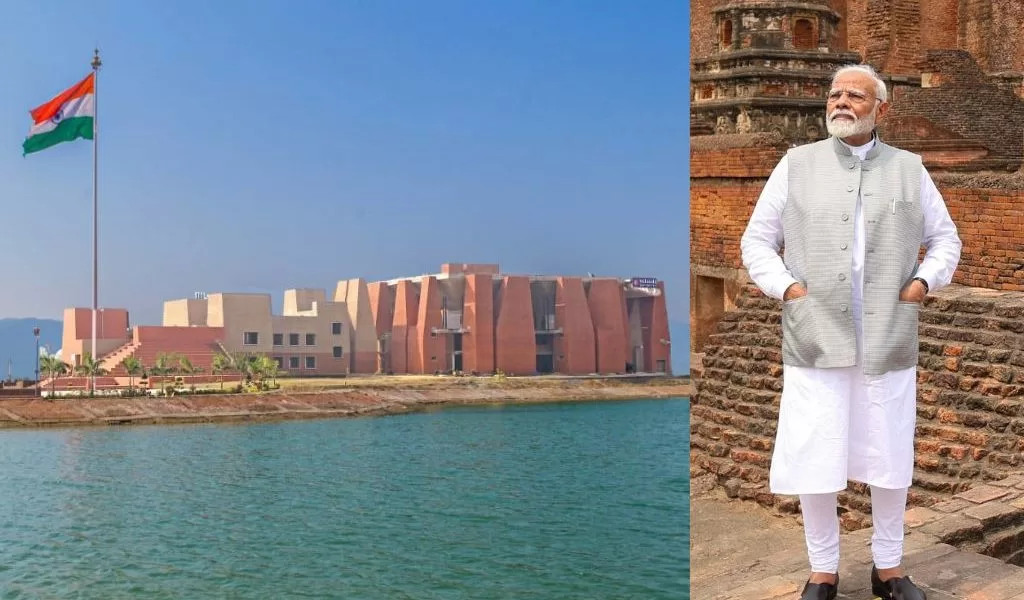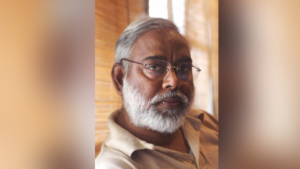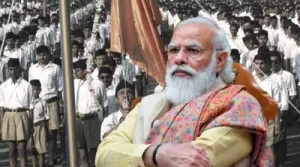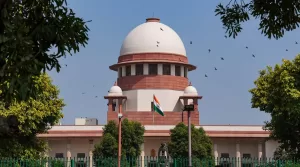Prime Minister Narendra Modi inaugurated the new campus of Nalanda University campus this week. He gave a speech and peppered his X account with a series of posts. The media, without ever asking how much taxpayers’ money was being spent on this uncertain project, began to flash images of the buildings, the artificial ponds and the so-called net-zero campus. It is well known that all the construction costs are being borne by the Indian treasury.
In 2016, after the Modi government undermined Nalanda’s autonomy, former Singapore Foreign Minister George Yeo resigned as its chancellor. Soon after, international faculty began to leave or were kicked out. International collaboration was envisioned at the East Asian Summit to revive Nalanda University in 2007 and again 2009. However, after 2016 contributions by the participating countries became “Net Zero”. A parliamentary committee report found this out in 2019.
Narendra Modi’s X post boasts that the Nalanda University campus is based on a “Net Zero Energy, Net Zero Emissions, Net Zero Water and Net Zero Waste model”. Perhaps he should have added that it will also be a “Net Zero Academia” campus. The University has not had a regular vice-chancellor for more than a year. Most members of the Governing Board, the apex decision making body, come from the government bureaucracy with a few from academia. It is chaired by an economist known more for making casual and insensitive statements such as “unemployment is not a problem”.
Unsurprisingly, a majority of faculty profiles on the university’s website are opaque. Very little is known about their degrees, publications, awards and recognitions. All these should be more open to public view and scrutiny. For the students who wish to pursue their Master’s degree, such limited information does not help. Opacity, or lack of transparency, has been a hallmark of the Modi regime. It also reflects in the functioning of the University. The recruitment of faculty members on a temporary or contractual basis further discourages qualified faculty from joining the University. In 2014 and 2015, Nalanda had done remarkably well in attracting high-calibre scholars and faculty from across the globe. However, most of these “founding faculty” have already moved on because of a lack of transparency, breach of contract and authoritarian approaches.
Since the Modi government appointed a Vice-Chancellor in 2017, students have turned away from the University. The University’s flagship Master’s programmes struggle to find adequate students. There are not many who are willing to enrol at the university and pay the fees. After all, a university is known for its academic reputation, built up over many years. The quality of its buildings and campus infrastructure is not all that makes a university. Nalanda may still have a few good faculty members, but the academic environment as a whole appears to have deteriorated. This impression emerges from a website that conducts a university ranking survey. This website says Nalanda University ranks 19 out of 24 universities in Bihar. This means that there are 18 much poorly funded universities in Bihar that are ranked above Nalanda!
If the above survey is correct then it is an alarming situation. In such a scenario, it is not hard to see why Nalanda University may be a reluctant destination for regular full-time students. Nonetheless, it draws a good number of monks from countries like Bhutan, Myanmar, Cambodia and Laos.
The University has started diploma and certificate courses, perhaps to increase the number of Indian students so that no one complains about low enrolment. However, as a research university, Nalanda was primarily meant to provide postgraduate education and conduct advanced research and produce knowledge. By handing out diplomas and certificates, Nalanda has become indistinguishable from the predatory institutions that are mushrooming across the country. These institutions hand out a useless piece of paper as a certificate without adequately backing it up with academic rigour, good training and skills required by students for employment. Unfortunately, the ritual of handing out certificates is contributing to an increase in the number of unemployed youth. But there are many people in responsible positions who peddle the idea that unemployment is not a problem.
Perhaps Nalanda University is a good example of the Modi Model. Things appear bright and shiny, but there is a dark truth lurking underneath. Asking why there has been no convocation of full-time regular students at Nalanda University ever since the first batch of students graduated in 2016 sheds some light on the dark truth. Convocation is a public ceremony. It will expose the university’s failure to attract a reasonably good number students to study on campus. The failure to attract students has its roots in the way the university prioritises mundane things over academics.
In 2010-11, the UPA government sanctioned Rs 2,710 crore for a period of ten years. The Indian taxpayer deserves to know whether the University has managed to educate 2,710 full-time students.
(Murari Jha is a historian. He has held research positions at the National University of Singapore and at Harvard University. Courtesy: The India Cable – a newsletter from The Wire & Galileo Ideas. The Wire is an Indian nonprofit news and opinion website. It was founded in 2015 by Siddharth Varadarajan, Sidharth Bhatia, and M. K. Venu.)




